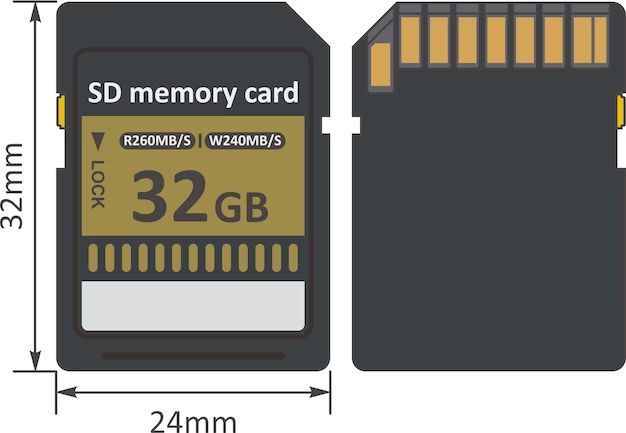Choosing the right size SD card can be confusing with all the different options available. The size you need depends on how you plan to use it and the device you’re using it with. Here are some quick tips to help determine what size SD card you should get:
What do you need the SD card for?
The main uses for SD cards are:
- Storing photos and videos from a camera or smartphone
- Expanding storage space on devices like laptops, tablets, and gaming consoles
- Transferring files between devices
If you’ll be storing a lot of high-resolution photos and HD video, you’ll want a card with more storage space, like 64GB or 128GB. If you just need some extra storage for documents, music, or other files, a 16GB or 32GB card should suffice.
What device will you be using it with?
The device you’re using the SD card with is important because some devices have limits on the maximum SD card size they can support:
- Digital cameras – Most support up to 2TB SD cards
- Smartphones – Support up to 512GB SD cards
- Nintendo Switch – Supports up to 2TB SD cards
- Laptops – Vary depending on model, but many support up to 2TB
- Tablets – Support up to 512GB SD cards
- Gaming consoles – Nintendo Switch supports up to 2TB, PS4 supports up to 4TB
Check your device’s manual or specs to find its maximum SD card capacity. Choose a card that’s within that limit.
How much storage space do you need?
Determine how much storage space you require for the files you want to store on the SD card. Here are some estimates:
| File type | Storage needed |
|---|---|
| MP3 songs | 5MB per song (average) |
| Digital photos | 2-4MB per photo (average) |
| HD video | 350MB per minute |
| SD video | 175MB per minute |
| Documents | 0.5MB per document (average) |
For example, if you estimate you’ll have:
- 150 MP3 songs (150 x 5MB = 750MB)
- 800 photos (800 x 4MB = 3,200MB)
- 20 minutes of HD video (20 x 350MB = 7,000MB)
You would need an SD card with at least 10,950MB, or around 11GB of storage space.
What speed class rating?
SD cards have speed class ratings that indicate the minimum write speed they are guaranteed to sustain. Higher speed classes allow for faster transfer of data like high-res photos and 4K video:
| Speed Class | Minimum Write Speed | Best Uses |
|---|---|---|
| Class 2 | 2 MB/s | Standard definition video |
| Class 4 | 4 MB/s | Music, photos |
| Class 10 | 10 MB/s | HD video |
| U1 | 10 MB/s | Full HD video |
| U3 | 30 MB/s | 4K video, burst mode photos |
If you’ll be shooting lots of photos in burst mode or high-res video, a U3 card is recommended. For everyday use, Class 10 is fine. Only use slower Class 4 cards for documents, music, and other lighter data usage.
Popular SD card sizes
Here are some of the most common SD card sizes and their best uses:
- 16GB – Good for light usage like documents, music, apps, photo and light video storage
- 32GB – Enough for lots of apps, photos, music and some video storage
- 64GB – Suitable for storing lots of high res photos and HD video footage
- 128GB – Ideal for professional/enthusiast photographers shooting lots of RAW images and 4K video
- 256GB – Mainly useful for dedicated video camera users shooting very large amounts of 4K footage
- 512GB – Overkill for most uses but provides maximum storage for huge photo/video archives
For most average users, a 32GB or 64GB SD card should be sufficient. Only professional photographers and videographers shooting lots of high-res content require cards larger than 128GB.
SD, microSD, SDXC, SDHC: What’s the difference?
These terms refer to the different SD card specifications:
- SD – The original SD card design with maximum capacity of 2GB.
- SDHC – SD High Capacity, introduced larger storage from 4GB up to 32GB.
- SDXC – SD Extended Capacity, supports cards from 64GB up to 2TB.
- microSD – A smaller form factor of SD cards used in devices like phones and tablets.
When buying an SD card, you’ll typically want SDHC or SDXC which offer greater capacity. The speed class and storage size are more important than the specification name.
Conclusion
Choosing the right SD card depends on several factors – your intended use, device compatibility, speed needs and storage space required. For most uses, a 32GB or 64GB SDHC or SDXC card of at least Class 10 speed should suffice. Professional photographers and videographers may need larger capacity and U3 speed cards. Always check your device’s maximum supported card size too. Considering these factors will help you pick the optimal SD card size for your needs and budget.
